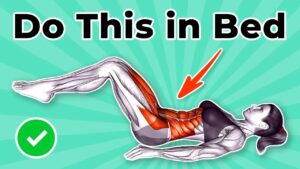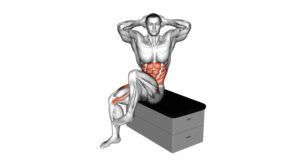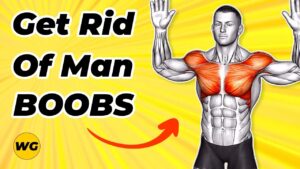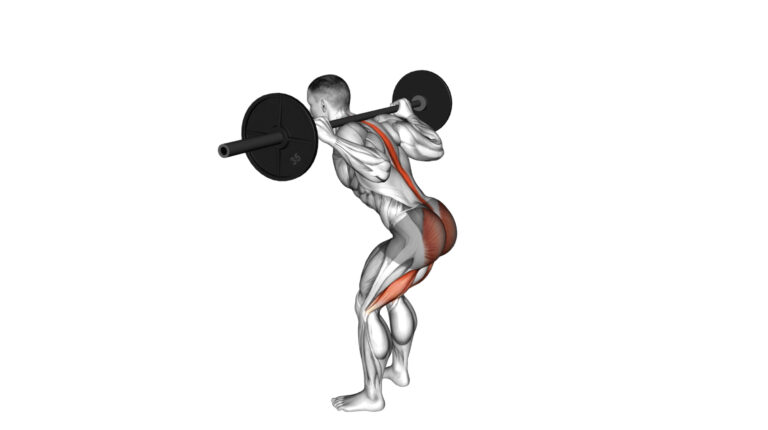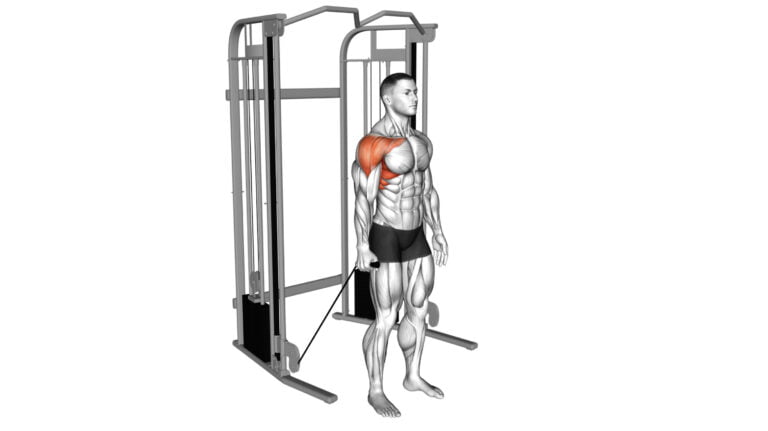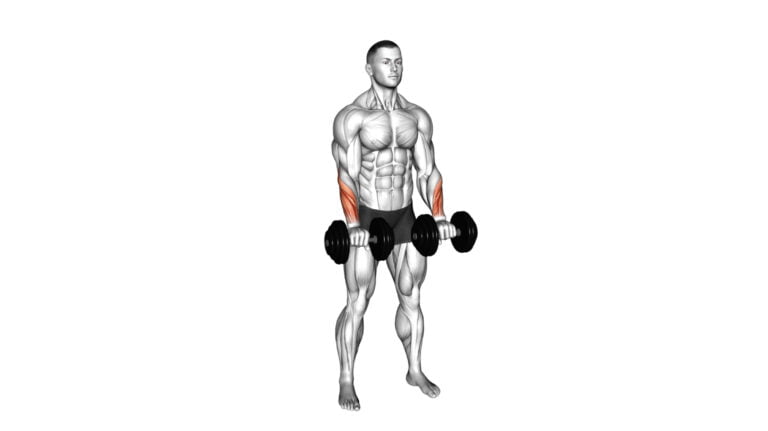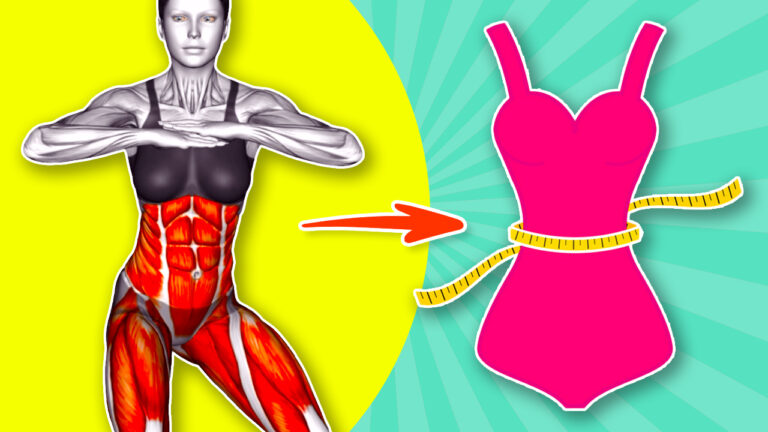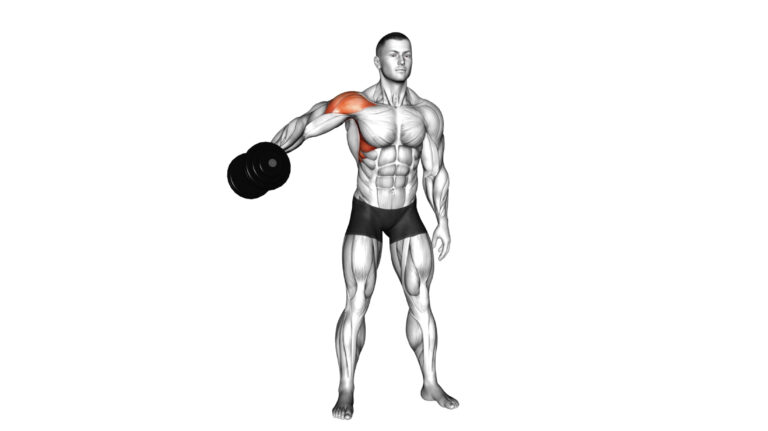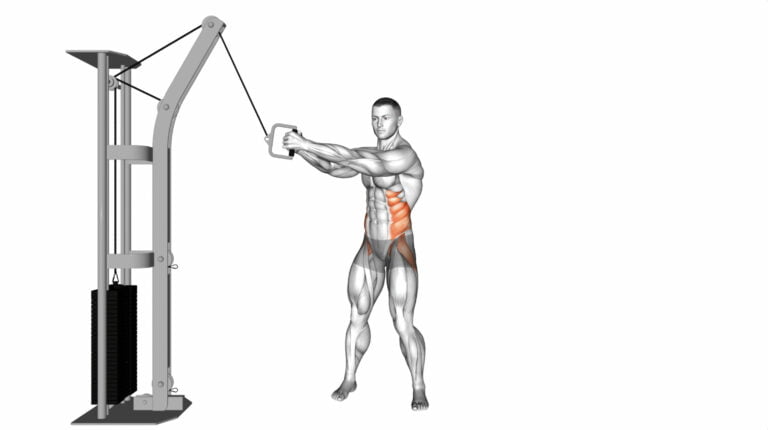Chair Workout: Best Exercises Without Using Knees For Bad Knees
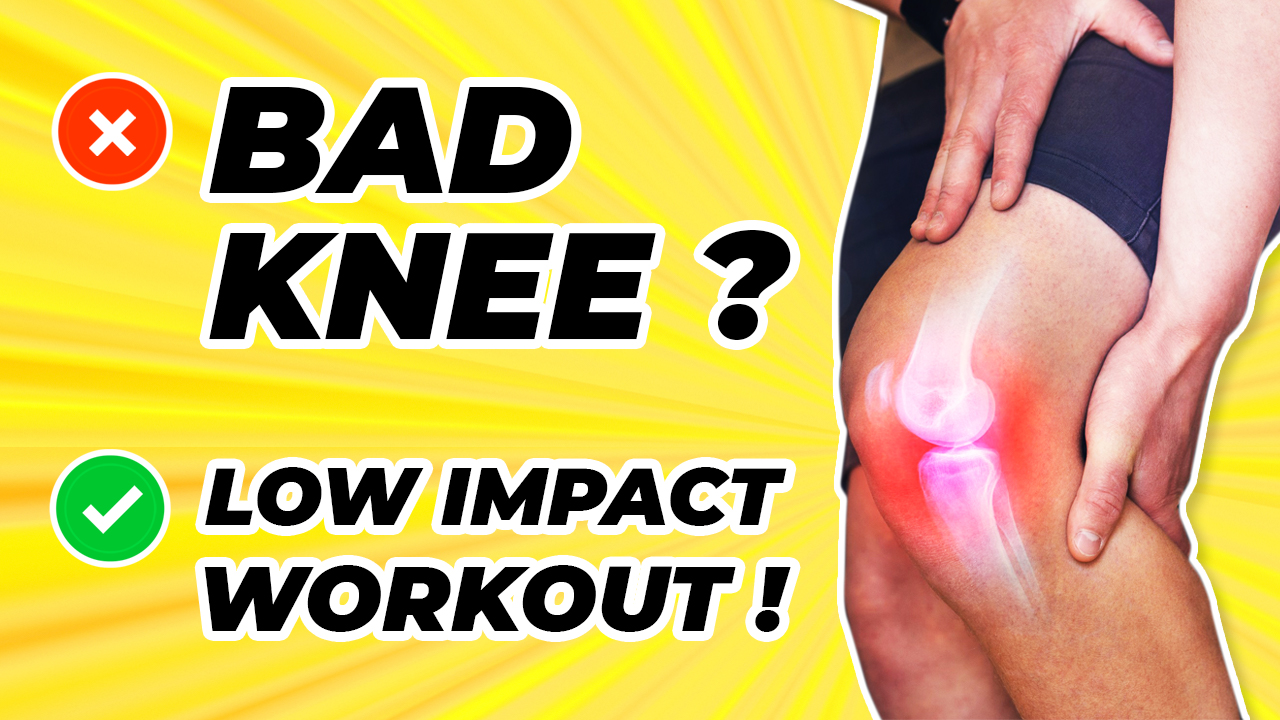
Knee pain stops many people from enjoying their daily activities and workouts. But, there’s good news: You can still get a solid workout in without putting pressure on your knees. Our focus here is on exercises without using knees, specifically created for those with knee concerns.
This approach opens the door to maintaining physical fitness and managing knee pain more effectively.
Serg Bayracny knows what works for exercising with limitations like bad knees. With over a decade of experience in strength sports and fitness coaching, Serg brings valuable insights into how to stay active safely.
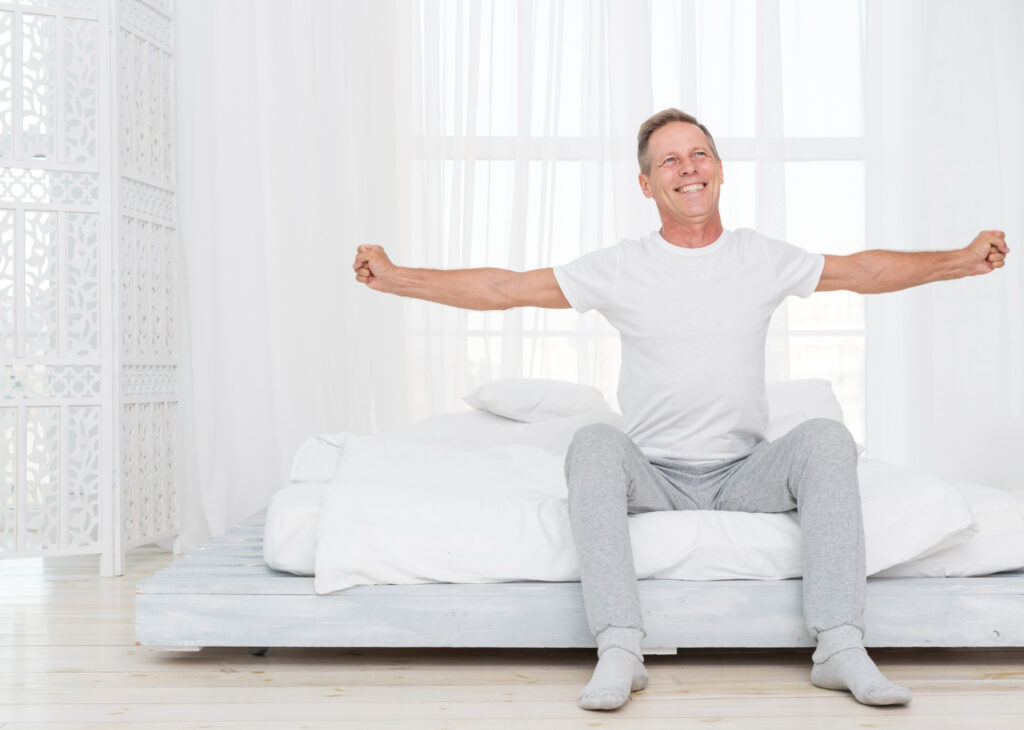
His background ensures that the advice you’ll receive is both practical and based on real-world success stories in overcoming knee pain through exercise. Ready to see how?
Key Takeaways
- Chair workouts can help people with knee pain exercise without hurting their knees. These include seated planks, resistance band exercises, and gentle cardio.
- Exercises like seated leg lifts and using resistance bands build muscle around the knees, which supports and eases pain in the joints.
- Keeping good form during chair exercises is important for safety and effectiveness. This means sitting up straight, moving slowly, and using tools like foam rollers for muscle recovery after workouts.
- Even if you have knee issues, staying active with chair workouts can improve strength and flexibility without worsening pain.
Knee Pain: Prevalence and Causes
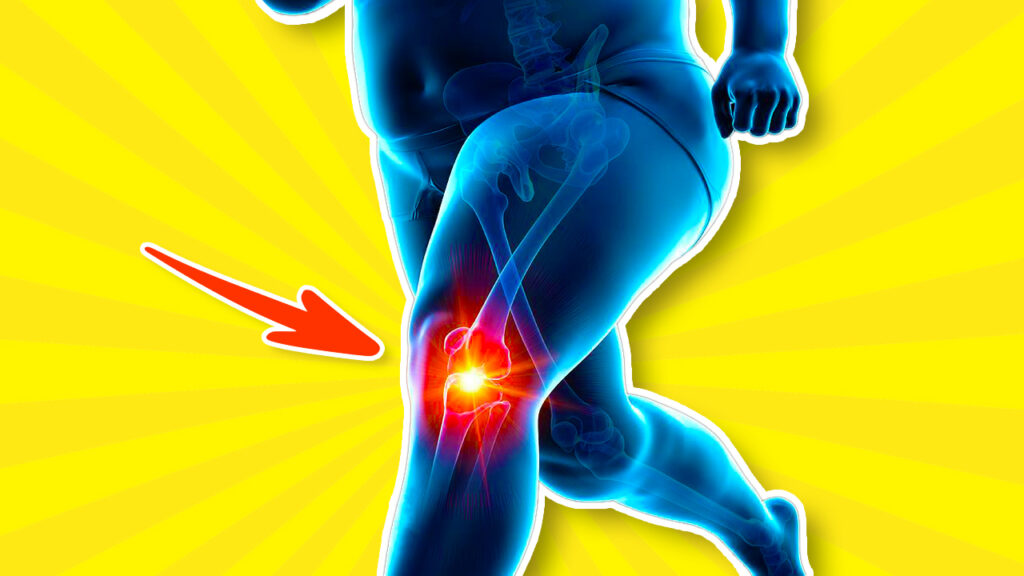
Many people have knee pain. It comes from many places like injuries or health issues. This makes doing exercises without using knees important for staying active and healthy.
Common Causes of Knee Pain
Knee pain can come from different sources. Aging, injury, repeated stress, or conditions like arthritis are common reasons. Arthritis might mean your joints are inflamed. This makes moving tough and painful.
Injuries such as sprains stretch or tear the ligaments in your knee. Overuse injuries happen when you do the same motion a lot, like jogging every day without rest days.
Another cause is being overweight. Extra weight puts more stress on your knees than they can handle sometimes. This leads to wear and tear over time. Muscle weakness around the knee also plays a role in knee pain.
If muscles like hamstrings or quadriceps aren’t strong enough, they can’t support your knees well during movements like squatting or walking up stairs.
Prevalence of Knee Pain
So, we talked about what causes knee pain. It’s time to see how common it is. A lot of people find their way into gyms or onto exercise mats because their knees hurt. From young athletes to folks past retirement – knee pain doesn’t pick favorites.
It comes from overuse, injuries from sports, or just part of getting older.
In my years coaching at the fitness center, I’ve seen this firsthand. People often think it’s just them struggling with these aches and pains around their knees – but it’s not.
Studies show that millions deal with some form of knee discomfort on a daily basis in the U.S alone. And let me tell you, these aren’t small numbers we’re talking about.
Knee pain is more than an ache; it’s a call to action.
Whether it’s due to arthritis or an old injury acting up again – there are ways to fight back without making things worse. That’s where exercises come in that don’t put pressure on your knees—like chair workouts for heart health without the strain on your joints.
Benefits of Exercise for Knee Health
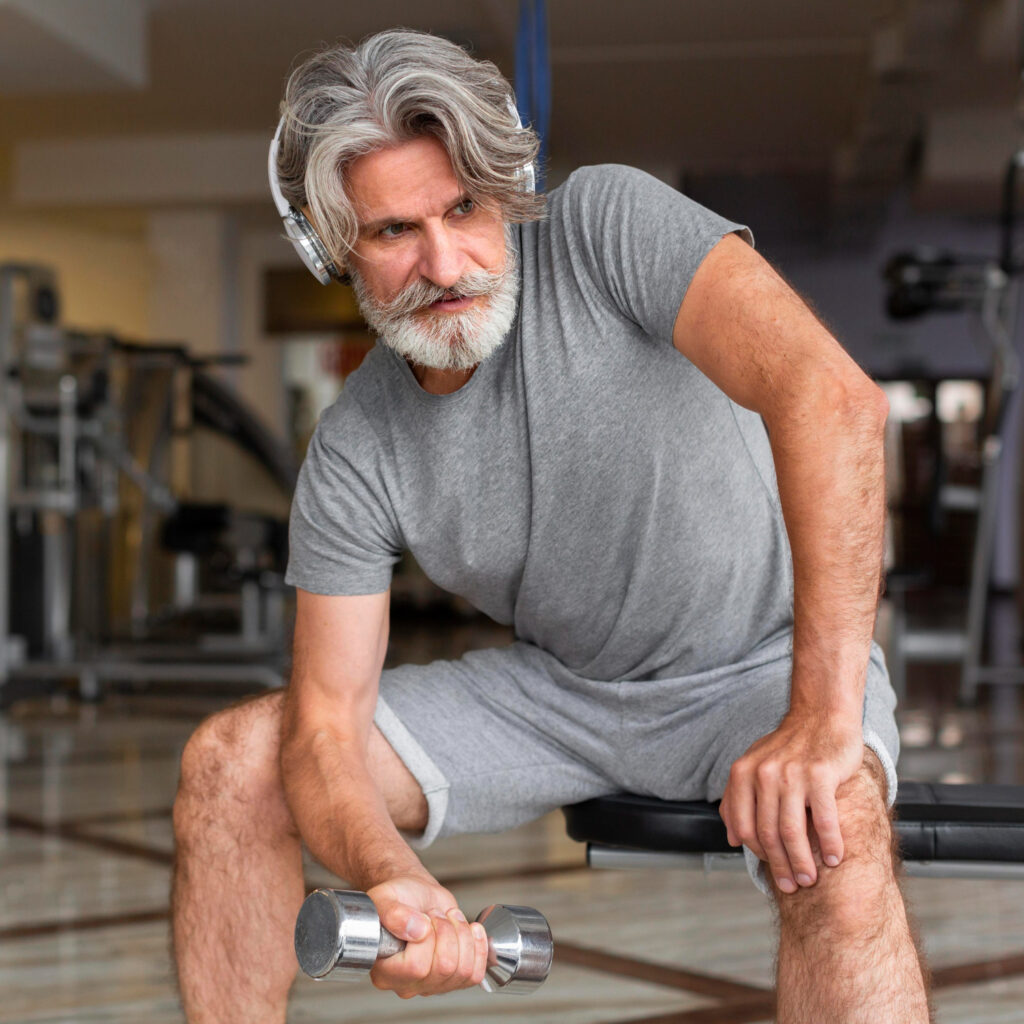
Working out helps your knees get better. Doing exercises without using knees makes them strong and keeps pain away.
Advantages of Exercise for Knee Pain
Exercise helps people with bad knees in many ways. Moving makes the muscles around your knee stronger. This gives your knee more support. Doing exercises like cycling on a stationary bike, water aerobics, and using an elliptical machine can make these muscles strong without hurting your knees.
Strength training, especially for your core and leg muscles, also protects your knee by taking off some of the weight it carries.
Moving also keeps the joint fluid moving. This is good because it stops your knee from getting stiff. Cardio workouts get blood flowing to your knees which brings nutrients that heal them.
Exercises such as tai chi improve balance and help prevent falls that could hurt weak knees further. So even if you have pain or are recovering from a knee injury, gentle physical activity can be part of getting better.
Exercise Precautions for Knee Sensitivity
Taking care of your knees is key if you have bad knees. Start slow and pick exercises that don’t put much stress on your knees. Focus on strengthening the muscles around your knees to help support them better.
This includes doing resistance training with bands or doing exercises in water, which is easier on the joints.
Listen to your body and stop if you feel any pain, a physical therapist told me once. This advice has stuck with me through my journey of dealing with knee sensitivity. It’s also important to warm up before starting your routine. A good warm-up gets blood flowing to all parts of the body, including the legs and knees, making injury less likely during exercise.
Now let’s look at some chair exercises perfect for those looking to relieve knee pain without further strain.
Top Chair Exercises for Knee Pain Relief
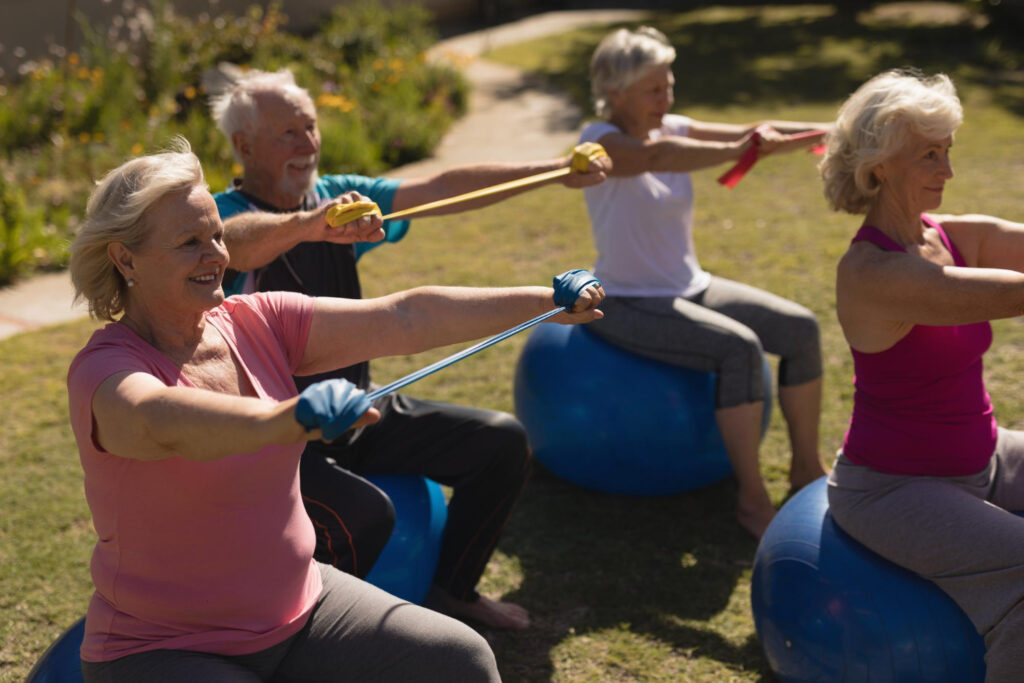
Exercises without using knees can help people with bad knee pain. Sitting down to work out keeps your knees safe while you get stronger.
Planking Variations Sitting Down
Planking exercises can strengthen your core without straining your knees. Doing them while sitting allows you to focus more on muscle strength and less on knee pain.
1: Front Sit-Plank: Sit at the edge of a sturdy chair with feet flat on the ground. Lean forward slightly, placing your palms on the edge of another chair in front of you. Keep your back straight like a plank from head to heels. Hold this position, feeling your core engage.
2: Side Sit-Plank (Left): Move to the left side of your seat. Place your right palm on the seat next to you and put your left hand on your waist. Slowly lift yourself using your arm and core muscles as if you’re trying to push the chair away with your right hand. Hold, then return gently.
3: Side Sit-Plank (Right): Do the same as above but switch sides. Use your left palm for support and keep the right hand on your waist.
4: Seated Plank with Leg Lift: Start in a front sit-plank position. Raise one leg slightly off the ground, keeping it straight. This move adds difficulty by forcing you to balance while engaging more muscles for stability.
5: Alternative Arm-Lift in Front Sit-Plank: While holding the front sit-plank, lift one arm instead of a leg, extending it fully in front of you. Alternate arms to maintain balance and strengthen both sides equally.
6: Rooted Elbow Plank: Instead of placing palms down, rest on forearms directly under shoulders while leaning forward in an almost standing position between two chairs for added intensity.
7: Cross Arm Seated Plank: Cross arms over chest while sitting upright; lean forward from hip joints keeping body straight from head to toes placed firmly together against ground force pushing back against imaginary resistance towards feet.
Each variation targets different muscles around the core area including belly fat reduction efforts without overlooking safety first principles concerning knee care practices during workout sessions aimed at those suffering from related discomforts thereby improving overall physical therapy experiences leading into easier daily activities involving lower limb movements such as walking up stairs or getting up from seated positions without more stress placed upon vulnerable joints especially for individuals facing chronic conditions like type 2 diabetes or obesity issues seeking non-surgical rehabilitative options through exercise therapy methods focusing primarily upon low-impact exercises created specifically around limitations faced by this demographic group aiming toward achieving better health outcomes over time through consistent practice and dedication towards personal well-being goals making these routines part of regular health and fitness plans moving forward into other forms of aerobic exercise options available for consideration next.
Resistance Band Workouts from a Chair
Resistance band workouts are perfect for those with bad knees. Sitting down can still offer a great way to strengthen muscles and improve flexibility.
- Seat yourself firmly in a stable chair, holding the ends of the resistance band in each hand. Place the middle part of the band under your feet. This setup is good for working on arm strength and helps with shoulder stability.
- Keep your back straight and pull the bands upwards, bending your elbows. This move targets your biceps, important for lifting and carrying things.
- For your chest, put the band behind your back while grabbing each end with your hands. Press forward until your arms are stretched out. It’s like pushing something heavy without standing up.
- Move to leg exercises by tying the band around one thigh, just above your knee (but not putting pressure on it). Extend that leg slowly against the band’s resistance, then bring it back. This works on leg muscles while keeping knees safe.
- Jerome’s experience shows that keeping a slight bend in your elbows during these exercises prevents strain. Also, adjusting where you sit can make movements easier or harder.
- Focus on breathing deeply while doing these exercises. It boosts oxygen flow and makes each workout more effective.
- After working one side of your body, always switch to the other side to keep things balanced.
- Finish with gentle pulling on both ends of the band, while it’s hooked under both feet, to stretch out your arms and upper body.
Using resistance bands from a chair offers a safe option for those with knee issues and brings variety into workouts without needing heavy weights or standing poses.
Cardio Exercises with Low Impact
Cardio exercises can boost your heart rate without straining your knees. They are perfect for people who need to take it easy on their joints.
- Seated Marching – Sit up straight in a chair and march your legs up and down. This simple move gets your blood pumping. It’s like going for a walk, but you’re sitting down.
- Chair Cycling – Use a mini-exercise bicycle under your desk or in front of your chair. Pedal away gently. It feels like riding a bike without putting weight on your knees.
- Arm Swings – While sitting, swing your arms back and forth as if you’re running. This helps raise your heart rate, working out your upper body at the same time.
- Side Leg Lifts – Sit on the edge of a chair and lift one leg out to the side, then switch sides. This strengthens your thigh and butt muscles while keeping pressure off the knees.
- Water Bottle Weights – Hold water bottles in each hand as weights and do arm curls or shoulder raises from a seated position. It builds muscle strength with minimal impact on the knees.
- Peaceful Rowing Machine Rows – Some rowing machines let you sit comfortably while pulling handles attached to bands or weights. It mimics rowing a boat, focusing on arm and back strength.
- Elliptical Trainer Soft Steps – If standing is okay for short periods, gentle use of an elliptical trainer can be good for knee health without harsh impact.
- Shadow Boxing – Sitting down doesn’t mean you can’t throw some punches! Air boxing works out the arms and improves heart function without needing to stand.
I tried these exercises myself after my knee surgery when I couldn’t do my usual workouts. I found out that these exercises helped maintain my fitness level and also made my recovery faster. I share this list with all my clients who have knee issues, and many have seen great improvements in their cardiovascular health without worsening their knee pain. Such exercises prove that staying active is possible even with joint problems. We just need to choose the right kind of activity.
Seated Leg Lifts and Kicks
Seated leg lifts and kicks are great for people with knee pain. They help keep your legs strong without hurting your knees. Here’s how you can do these exercises:
- Start by sitting up straight in a sturdy chair. Make sure your feet can touch the ground.
- Place your hands on the sides of the chair for balance.
- Slowly lift one leg at a time as high as you can without causing pain. Hold it up there for a few seconds, then gently lower it. This is your leg lift.
- For kicks, start just like you did for leg lifts. But this time, extend your lifted leg out straight before you slowly bring it back in and place it down.
- Repeat these moves 10 to 15 times for each leg.
- To add more challenge, strap on ankle weights. Start light, maybe one or two pounds.
- Keep your core tight while doing these exercises to help with stability and strength.
- Jogging in place while sitting can also be a good start before doing these exercises to warm up your muscles.
- After exercising, use foam rolling on your thighs to help with muscle recovery if soreness happens.
From my years of coaching those with bad knees at gyms and teaching fitness seminars, I’ve seen firsthand how seated exercises offer relief and strengthen muscles around the knee joint without adding stress to it.
Doing these exercises regularly can improve flexibility and might even ease some knee pains over time—making them an essential part of managing knee health alongside other treatments like massage or orthopaedic care provided by professionals.
Watch the video 10 Chair Exercises Without Using Knees For Bad Knees
The video “10 Chair Exercises Without Using Knees For Bad Knees” is a great guide for those of us with knee pain. It shows how to do exercises without using knees so we can stay fit without hurting ourselves.
I tried these exercises and found them helpful in keeping my body active while not putting any strain on my knees. The workouts include resistance band movements, seated leg lifts, and gentle core strengthening drills that all focus on improving heart and lung fitness without the stress on our knees.
This video was a game-changer for me, showing that effective workouts are still possible without adding pain to already bad knees.
Cardio doesn’t always mean running or jumping. In this video, low-impact cardio exercises from a chair help maintain cardiovascular fitness, crucial for preventing chronic diseases like heart disease and type 2 diabetes mellitus.
Plus, it talks about how these seated activities can support weight loss by boosting insulin sensitivity without the need for high-impact moves that could lead to overuse injuries or worsen knee conditions.
Tips for an Effective Chair Workout
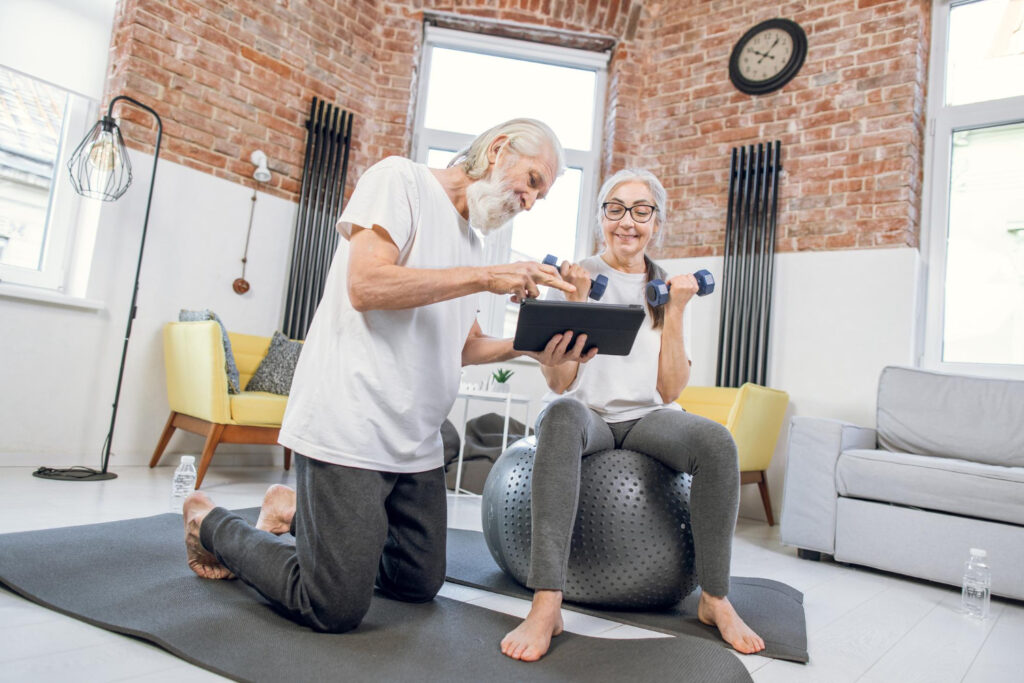
For a good chair workout, keep your moves right and safe. Use tools like resistance bands to make exercises without using knees work better for you.
Ensuring Proper Form and Technique
Good form and technique are key for a safe chair workout, especially for people with bad knees. Start by choosing the right chair without wheels to keep steady. Sit tall with your back straight, engaging your core muscles during each exercise.
This not only helps in preventing overuse injury but also maximizes the benefits for knee-pain relief.
I’ve seen many try seated leg lifts or kicks and rush through them, leading to poor form. Make sure you lift your legs slowly, feeling the contraction in your muscles rather than letting momentum do the work.
Using resistance bands? Keep your movements controlled and paced to avoid snapping back that could hurt. Breathe evenly throughout your workout—it keeps oxygen flowing to those working muscles.
Next up: how adjusting exercises can further protect those knees while keeping workouts effective.
Adjusting Exercises for Comfort and Safety
Making your chair workouts comfy and safe is key. If knee pain bugs you, pick exercises that don’t put pressure on knees. Stick to moves like seated leg lifts or use a resistance band for strength without the strain.
Always sit up straight to keep your back happy. This helps big time with core engagement too.
For those tougher days, tweak exercises so they’re easier on you. Maybe do shallower squats instead of deep ones if standing is part of the plan. And hey, using tools like foam rollers can ease muscle tightness after working out.
They’re great for recovery and keeping muscles smooth.
Using Foam Rolling for Muscle Recovery
After adjusting exercises to keep things comfy and safe, foam rolling steps in as a game-changer for muscle recovery. Foam rollers — those long, tube-like tools you see at the gym — work wonders on sore muscles after a chair workout.
I’ve rolled my way through many sessions and felt the tight spots in my legs easing up. It’s like giving yourself a deep tissue massage but with less hassle.
Rolling out muscles helps break down knots and improves blood flow, making it easier to move without pain. Think of it as prepping your muscles for their next workout or simply helping them chill after a tough session.
And yes, even if knee problems make some workouts tricky, using foam rollers is still on the table — or should we say, mat?
Conclusion
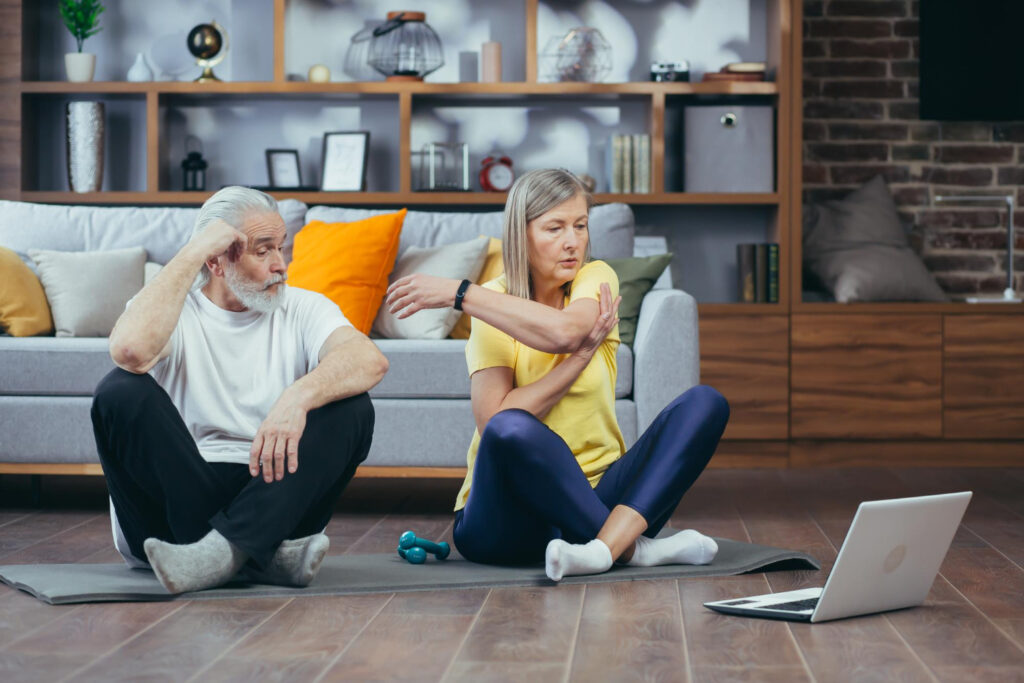
We talked about chair workouts that help people with bad knees. These moves don’t stress your knees. They include sitting planks, stretches with bands, gentle heart-pumping exercises, and leg lifts.
Doing these can ease knee pain and make muscles stronger.
These exercises are easy to do at home and safe for those worried about knee hurt. They fit well into daily routines. Using the right form is key to avoiding injury and getting the most out of your workout.
Chair workouts have big benefits for knee health without making pain worse. For anyone needing more help or wanting to learn more, lots of videos and guides are online.
Give these exercises a try if you want to feel better without hurting your knees. Stick with them, and you’ll see improvement in how your knees feel and how strong you get.
FAQs
1. What are chair workouts?
Chair workouts are exercises you do while sitting. They’re great for people with bad knees or those who need to avoid weight on their legs.
2. Can I lose weight with chair exercises?
Yes, you can! By doing things like arm lifts and seated marches, you keep moving without hurting your knees. Add a healthy diet, and you’ll start to see changes.
3. Are there any special tools I need?
Not really! Most times, just a stable chair is enough. For some exercises, like hammer curls, you might want small weights or water bottles.
4. Do these workouts help if I have knee osteoarthritis?
Absolutely! Since your knees aren’t stressed during chair workouts, they’re perfect for folks with knee troubles like arthritis.
5. Can I make my heart strong with sitting exercises?
Sure thing! Exercises like fast arm circles can get your heart pumping right from your chair.
6. What’s the best way to start these exercises if I’m new?
Start slow; maybe try some gentle stretches first… Then move into more active stuff as you feel ready—no rush.

Author
Years ago, the spark of my life’s passion ignited in my mind the moment I stepped into the local gym for the first time. The inaugural bead of perspiration, the initial endeavor, the very first surge of endorphins, and a sense of pride that washed over me post-workout marked the beginning of my deep-seated interest in strength sports, fitness, and sports nutrition. This very curiosity blossomed rapidly into a profound fascination, propelling me to earn a Master’s degree in Physical Education from the Academy of Physical Education in Krakow, followed by a Sports Manager diploma from the Jagiellonian University. My journey of growth led me to gain more specialized qualifications, such as being a certified personal trainer with a focus on sports dietetics, a lifeguard, and an instructor for wellness and corrective gymnastics. Theoretical knowledge paired seamlessly with practical experience, reinforcing my belief that the transformation of individuals under my guidance was also a reflection of my personal growth. This belief holds true even today. Each day, I strive to push the boundaries and explore new realms. These realms gently elevate me to greater heights. The unique combination of passion for my field and the continuous quest for growth fuels my drive to break new ground.





